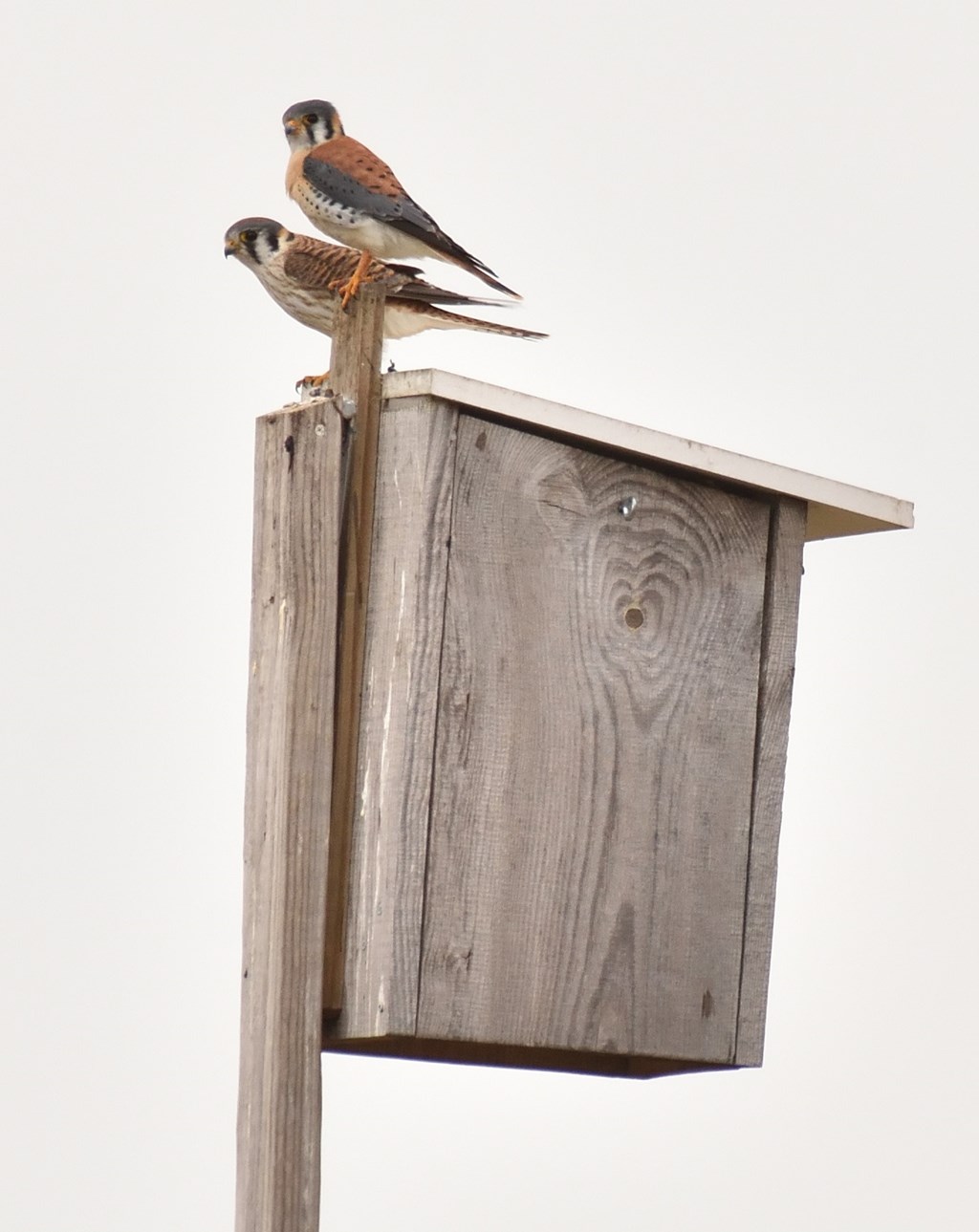Hawk Mountain Receives US Fish and Wildlife Grant to Conserve Grassland Raptors
Posted on August 30, 2024 in Science

The U.S. Fish and Wildlife Service and the National Fish and Wildlife Foundation has awarded Hawk Mountain Sanctuary a $246,000 grant, one of 30 to support wildlife habitat, climate resilience, community conservation partnerships, and equitable access to nature in the Chesapeake Bay watershed.
The project, “Conserving Farmland Raptors in the Chesapeake Bay Watershed,” is designed to advance the goals of the Chesapeake WILD Program and leverage matching funds. With funding in hand and working in partnership with watershed conservation organizations, DCNR watershed program, and other partners in Lancaster, Chester, and Dauphin Counties in Pennsylvania and northern Maryland, Hawk Mountain will enhance nesting opportunities for imperiled farmland raptors within the Chesapeake Bay watershed, particularly the barn owl, American kestrel and northern harrier.
“Our goal is to work with watershed partners to conduct landowner outreach and public education to implement on the ground farmland raptor conservation and watershed improvements, and monitor the response by raptors where possible, engaging them in the work,” says Hawk Mountain’s Director of Conservation Science Dr. Laurie Goodrich.
The intent is to deploy at least 150 kestrel nestboxes and 30 barn owl boxes, and to connect private landowners and partners with opportunities to band nestlings and observe and participate in wildlife management, first-hand. The project also will share the importance of farmland raptors with young people through curricula and in-box webcam footage in both urban and suburban schools and including Amish and Mennonite schools.
Hawk Mountain is uniquely qualified to lead this partnership, building upon its existing Farmland Raptor Project for Pennsylvania, in operation since 2012, and primarily in the Delaware watershed. However, barn owl, American kestrel, and northern harrier are imperiled throughout Pennsylvania and Maryland, and this work will be the first attempt to couple watershed habitat restoration with raptor conservation actions.
“We can augment outreach by watershed groups by offering raptor nestboxes for landowners and public education programs on raptors and their benefit to the farmer to encourage more landowners to implement stream buffers,” explains Hawk Mountain Biologist-Naturalist Bracken Brown, who oversees the Farmland Raptor Project at the Sanctuary.
“Restoration of stream buffers may provide benefits to raptors by providing healthy habitat for raptor prey, such as voles and mice,” he adds.
The Chesapeake Bay is the largest estuary in the U.S. and home to thousands of species of plants and animals. Nearly one million waterfowl winter on and near the bay each year — approximately one-third of the Atlantic Coast’s migratory population. More than 18 million people live and work in the Chesapeake Bay region, many depending on industries tied to the health of the watershed, like outdoor recreation, farming and fishing.
Celebrating 90 years in raptor conservation, Hawk Mountain Sanctuary is the world’s first refuge for birds of prey and an international center for raptor conservation. To support the Farmland Raptor Program, visit hawkmountain.org/farmlandraptors.